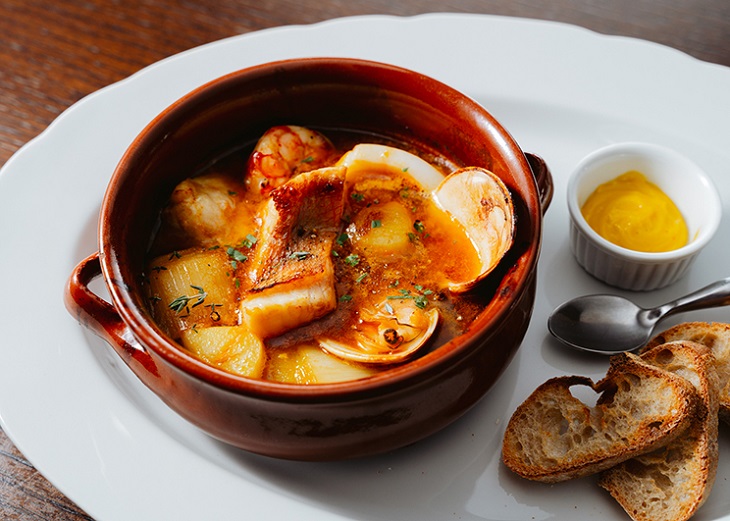For May, we are pleased to share ten new additions to the MICHELIN Guides to Tokyo, ahead of the annual launch ceremonies when the MICHELIN Stars, Bib Gourmands and MICHELIN Green Stars will be unveiled.
These newly added restaurants appear on our official website and are highlighted with a ‘New’ symbol for easy identification.
May 2024
French cuisine takes centre stage at Saucer. Feel free to drop-in at standing sushi restaurant Sushi Mikata. A husband-and-wife team offer counter-style Chinese cuisine at Chugokusai HINA. RISTORANTE la primula brings a profound sense of sincerity to every dish. Experience casual French cuisine at bonélan in Omotesando. Indulge in delicious sake and Japanese cuisine at wokotote. DAN features an arced counter wrapped around the restaurant’s kitchen. Experience luxurious kaiseki multi-course meals with a focus on chicken at Toriyaki Ohana. Tachiguisushi Sushikawa recreates Edo-period food stalls for today’s Reiwa era. Alternative uniquely deconstructs traditional concepts of French cuisine.
Tokyo
Bonélan
FrenchTucked adjacent to its sister restaurant l’élan, Bonélan offers a relaxed dining experience, where the theme is ‘classic cuisine, casual style’. The allure of traditional cuisine, passed through a modern filter.

Saucer
FrenchThe name is French: saucer used as a verb, to pour sauce or to drizzle sauce on bread. The standard fare is what the chef terms ‘saucer’: freshly baked bread on one plate and a sauce on the other. As an apprentice, the chef was appointed saucier, sauce master; his confidence shines in his work today.

Toriyaki Ohana
Chicken SpecialitiesA menu that is all about chicken in the traditional kaiseki multi-course meal style, from a chef accomplished in Japanese cuisine. Grilled chicken and duck are not skewered but char-grilled on a wire net, pungently scorched on the surface by broiling close to a hot flame.

Chugokusai HINA
ChineseThe inherent flavours of the ingredients are held paramount, interpreting the seasons of Japan through Chinese cuisine. In a novel twist, instead of Shaoxing wine, items are paired with well-aged Japanese sake or organic wine.

DAN
FrenchThe intimate establishment and cheerful circle of guests make Dan a step up. The counter forms an arc around the kitchen, dissolving the barrier between host and guest.

Alternative
FrenchNoting the free rein Gallic cuisine enjoyed during his sojourn in France, the chef named his restaurant ‘Alternative’ to signal his determination to create new value. He lays the foundations of classic French theory and technique before adding elements from Japanese and Chinese culinary traditions.

RISTORANTE la primula
ItalianA counter-style Italian eatery presented by a chef who learnt his trade in northern Italy and an owner who loves all things Venetian. The northern penchant for butter influences the chef’s culinary stylings.

Wokotote
JapaneseTo enable diners to easily enjoy Japanese cuisine, he serves his dishes either à la carte or as omakase set meals, according to their preferences. Cuisine, people, drinks and interior blend agreeably together, so relax and let the time flow by.

Sushi Mikata
SushiThe origins of Sushi Mikata go back to a standup sushi bar the chef went to with his father when he was a boy. Aiming to be a place where people could drop in casually for sushi, he emulated this standup format. Guests can order in amounts as small as one piece at a time.

Tachiguisushi Sushikawa
SushiSushi got its start as hawker food that flourished in Edo (old Tokyo). To impart a feeling for that culture, Tachiguisushi Sushikawa is a standup sushi bar (and is what the name means). A sushi local where regulars come to chat with the chef.

April 2024
Tokyo
CYCLE
FrenchPrix fixe menus are composed from four themes—roots, leaves, flowers and fruits—expressing the beauty of nature and the cycle that happens in our world.

le bistrot des bleus
FrenchThe ‘blue’ of this ‘bistro of the blues’ refers to the blue in the French flag, which represents liberty. The young chef and sommelier enthusiastically pour out their passion for French cuisine.

124. KAGURAZAKA
YakitoriThe numbers in the name are both the address of the shop and the birthday of a member of staff. norimaki (bite-size chunks wrapped in nori seaweed) of chicken tenderloin, cooked vegetable salads and deep-fried tofu intersperse the omakase set meal, varying the tone and providing items that pair agreeably with sake.

Fry-ya
TonkatsuSelect the ingredients of your choice and the kitchen will prepare an original ‘mix fry’ just for you.Daytime fare consists of set meals of a variety of items. In the evening, multi-course prix fixe is the theme, with each morsel fried and served fresh.

apothéose
FrenchThe sights, smells, flavours, even the acoustics of the dining room resound with the natural métier of the producing regions.Willingness to experiment, unconstrained by convention, ensures customers understand the joys of food.

Orchestra
ItalianImola, the city in Italy’s Emilia-Romagna where the chef apprenticed, has a famous music academy. The restaurant’s name derives from the passion for classical music he learned from the students he befriended there. Cuisine on plates decorated with musical-instrument motifs and classical music piped into the dining room deliver a performance worthy of any conservatory.

Jfree
French‘Jfree’ means ‘free’ as in ‘free expression’. French cuisine with a healthy dollop of Japanese influence, by a chef well versed in Japanese cuisine.

DepTH Brianza
ItalianChef's latest culinary adventure is a taste test that takes Italian cuisine a little outside its comfort zone. While firmly grounded in tradition, he enjoys reframing Japanese ingredients in creative ways.

Sushidokoro Yamato
SushiOmakase set menus lean towards nigiri, fulfilling the duty of a true sushi restaurant. Rice is seasoned with a mixture of red vinegar and rice vinegar to accommodate a wide range of sushi toppings.

Sushiya Hajime
SushiFish is prepared according to ancient practices such as salting and simmering. Omakase set meals consist of numerous pieces of sushi formed small, affording rich variety and commitment to quality is uncompromising, which is deeply satisfying.

Related articles:
2023: New Additions to the MICHELIN Guide Japan
Illustration image:© wokotote














